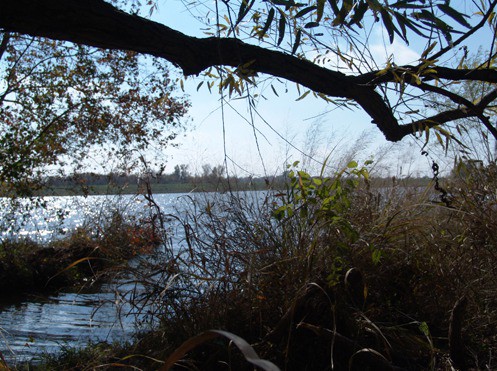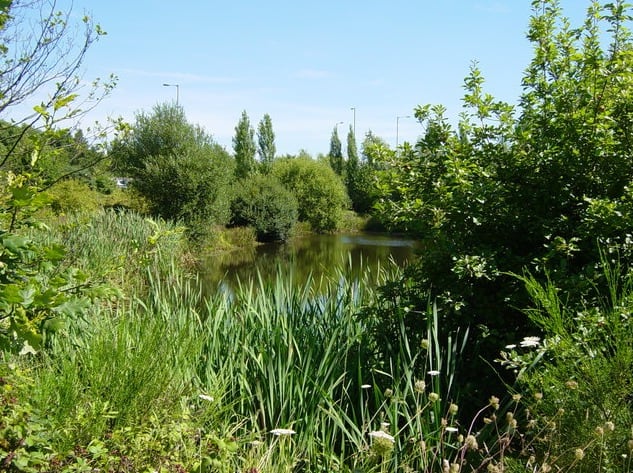We all want to learn how to catch big crappie. I wish I could tell you that I know some secret scoop that will guarantee you big slabs on every trip.
Unfortunately, I don’t know any super secret jealously guarded secrets. What I do know is that there are ways to improve your chances of catching big ones. We all try to increase our odds of catching big crappie. For most of us, increasing our odds consists of having as many hooks in the water as possible. For me, that means that I dedicate all 3 poles that I am allowed on the barge/dock, to crappie fishing.
But I am not talking about simply increasing odds. I have a few things that you can do on your next fishing trip that will increase your chances of landing a big slab.
But first what is a slab?
WHAT IS A SLAB?
This is a tough question. It seems like every tale out there involves catching slabs left and right. Are there any regular sized crappie left in the US?
A Slab is difficult to pin down. There is no standard definition.
I read on a forum that a crappie is a slab if the fillet hangs over the sandwich bread on all 4 sides. I like that one 
In some states, crappie over 9 or 10 inches are rare. Here in TX that is really an average size.
For this article, I will go with my personal definition of a slab – any crappie over 1.5 lbs and over 14 inches. Don’t ask me why 14 inches and not 15. I don’t know 🙂
Ultimately a slab is in the eye of the beholder! Based on your location, you should know if the crappie you just caught was a “normal” sized one, or not.
Now let’s talk about how to catch the big ones
DON’T FISH WHERE EVERYONE DOES
This is counter-intuitive but stay with me for a bit.
There are places where everyone and their sister fishes. You know the drill. If you have a favorite spot on the bank of your local lake, chances are good that it is also the favorite spot of 20 other people.
If you own a boat and fish the same shallows and spots on the lake each and every spring, chances are that you are sharing the location with other fishermen/women.
After all, these spots got popular because at some point fishermen/women found success there.
But they are also popular and overcrowded because they are easy to get to.
This leads to over fishing or what the pro’s call “Angler pressure”. This pressure means that over time, you will catch less and less.
So why not explore a bit and locate some promising spots that are a bit more difficult to get to? This will discourage 99% of fishermen/women. With a little effort (and maybe some discomfort) you will locate excellent fishing spots that you will have all to yourself.
What do I mean by a bit more difficult? Here is a very easy example.
The barge where I fish has some notoriously “snaggy” spots. Basically, the barge owners sank the biggest and craziest Christmas trees in these locations and it is so thick that you are all but guaranteed to get snagged and to lose your terminal tackle.
NO ONE fishes these spots. The regulars know exactly where these spots are and avoid them like the plague. New people figure it out in about 5 mins and move on to the next spot.
The interesting thing is that these spots are literally a foot or two away from the “good spots”.
Anyways, I decided that I would start fishing these “hard” spots and the results were very interesting. I still got snagged a lot and lost a shipload of Aberdeen hooks. I got super annoyed, but you know what? I caught some slabs there. Literally a foot away from the “good spots”.
Basically I was willing to try something that most others did not want to bother with. I decided to accept the fact that I would lose tackle, and that would probably get a bit frustrated. In exchange, I now have spots that I can fish anytime I want because NO ONE fishes them.
I also noticed that I am getting better every time I fish there. I am learning the idiosyncrasies of these locations and by doing so, I am getting more efficient (I still lose a bunch of hooks but hey, it’s worth it).
Here is another example. I also fish on lake Grapevine. I found a pretty cool spot that kayakers used to launch and land their kayak. Over the years, this has created a nice little beach area. I use it after the summer and no one ever bothers me. It is a bit out the way with only 2 parking spots in the middle of nowhere so it is pretty much empty.
Occasionally, I have noticed an older gentleman in a very dense section, a few yards away from my position. He wears waders and basically wades out to this spot. This is what I mean by making the effort to find a good spot.
I found a great secluded spot, but this gentleman took it a step further. He puts on waders and goes out in cold weather to a spot that no bank fisherman/woman, no kayaker, and no boater can reach.
I have never spoken to him, but by the looks of the spot he picked, I can guarantee you that he catches his limit quite often. I can also guess that he catches a few slabs along the way.
Find a spot where no one can get to easily whether they are on the bank, a boat or a kayak! If you need to wade out, do it (safely). If you know you will have to deal with lots of hang up, deal with them!
A last bit of advice on this topic is to expand your fishing area. Every state and county has a few main lakes where everyone goes fishing. These are the well-known names that are popular with anglers, boaters, kayakers and regular folks. This means that when the weather is nice, these lakes are very crowded.
Talk to your fellow anglers. Look through fishing forums. You want to try to discover new fishing grounds that are a bit off the beaten path. You are looking for smaller, less known lakes. You may find a creek right around the corner that you never knew was there.
Four years ago I was fishing Joe Pool Lake and chatting it up with another fisherman. After a while, we got to talking about good spots to catch crappie. We discussed the main lakes but he mentioned a creek right off the main highway a quarter mile away from where we were.
The next week, I went looking for it and found it! I parked right on the side of the road and hiked down to the creek. That spot became my little secret for the next 3 years. I seldom found anyone there. It was a fantastic little spot where I caught tons of crappie, catfish and bass.
Unfortunately they expanded that section of highway 360 and the creek is all but gone now!
Ask around and do some detective work. I can almost guarantee you will find a new spot that is less frequented that your go-to fishing spots!
Check out this article on the best crappie techniques
BUILD AND SINK YOUR OWN BRUSH STRUCTURES
One of the most successful crappie fishermen that I know regularly catches his limit every time he goes out on the lake. He does this without fail, regardless of the season.
How does he maintain this consistency? Easy! He knows where to find the crappie because he knows exactly where he sunk his own brush structures.
He fishes lake Tawakoni here in TX. Over the last 20 or so years, he has painstakingly built and sunk brush structures all over the lake. When he sinks them, he marks them on his GPS and voila!
He can go from saved location to saved location and catch his limit every time.
By sinking his own structure, he knows exactly where they are (no one else does). There is little competition in those spots since they are randomly spread out on the lake.
If you don’t own a boat, you can still do something similar. If you fish a dock or a barge, you can build and sink your own structure. The most common structure on docks or barges is to tie a tree to some cinder blocks and chuck them over the side
Make sure you note exactly where you sink the trees and that they are weighted down enough not to move with the currents.
Old Christmas trees are really good for this. After the holidays, haul your old Xmas tree to the dock and sink it!
USE BIG BAITS!
Many anglers swear by this technique. I read an article where a Bass fisherman ended up catching about 15 slab crappies without intending to.
If you are not getting many bites or if you are just catching a bunch of small ones, try to supersize your bait.
Instead of the 1/32 or 1/16 with 1 inch soft plastics, switch to 1/8 oz jigs with 3 inch plastics. You might be surprised at what you pull out of the lake.
This one angler said that he used 3 inch yum dingers and was catching 2 pound crappies.
Basically, switch to Bass sized baits, using crappie fishing techniques. You may not catch a whole mess of crappie, but if you are looking for trophy sized ones, this may just do the trick.
I have used this technique before with limited success. That could be because of the lakes that I fish. Many anglers are super successful with this technique and I have no reason to doubt them. Give it a try, you have nothing to lose.
Here is an article I wrote on crappie fishing bait
WHAT OTHER TECHNIQUES DO YOU USE?
I hope you found this post helpful. If you have some technique to catch big crappie, please share with us in the comments section below. If you enjoyed this article, please let me know.
Whatever your definition of a slab is, go out there and catch you one!
Good luck out there!
Mike




Hi Mike, interesting post on catching big crappies. I used to fish quite a bit, but over the last decade or so have not. Would like to get back into it. Crappie are good eatin as they say. I never heard the term slab before. I also like your idea of using big baits to catch crappie. The key for catching crappie is finding their beds. Seems if you do, you can catch more than one in a short period of time. Thanks for giving me the fishing itch back. Tom
Hi Tom! I am glad I got your fishing “itch” back….. I absolutely love it. Slabs are a funny term and everyone defines it differently. The one I like the most says something like “if the fillet overflows the sandwich bread…Its a slab!” You are also correct in saying that once you hook one crappie, chances are you will hook many more. just be patient and fish the same depth. You will feel the thump within a few minutes.